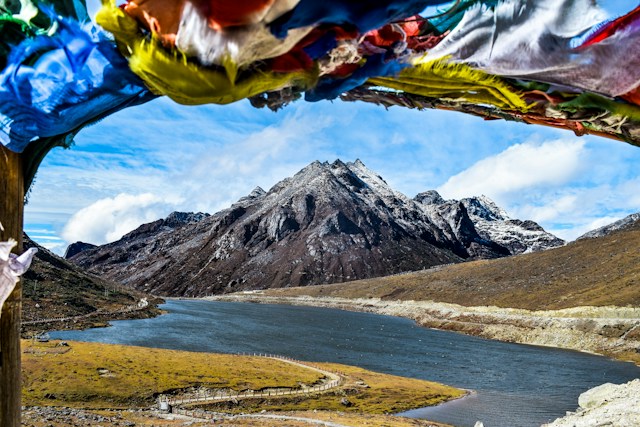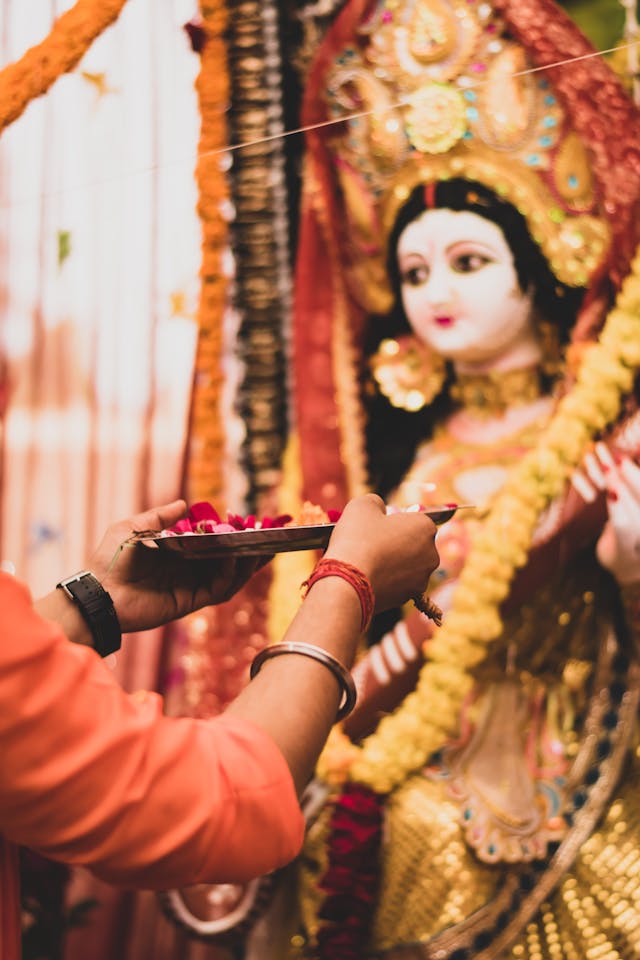North East India, a region steeped in history and spirituality, is home to an array of ancient sites that offer a window into the past civilizations and cultures that have thrived in this secluded part of the world. Among these, the Kamakhya Temple in Assam stands as a pinnacle of Tantric Hinduism, revered for its mystical practices and the annual Ambubachi Mela, drawing devotees from across the globe. The temple, situated atop the Nilachal Hill in Guwahati, is believed to be the site where the goddess Sati’s yoni fell, making it one of the 51 Shakti Pithas. The architectural grandeur and spiritual aura of Kamakhya Temple offer a profound insight into the region’s religious significance and the intricate belief systems that have shaped the local culture.
Tawang Monastery and the Ahom monuments
In Arunachal Pradesh, the Tawang Monastery, founded in the 17th century, serves as a spiritual haven and a stunning example of Buddhist architecture. This monastery, nestled in the Himalayas, is the largest of its kind in India and the second largest in the world, symbolizing the profound impact of Buddhism in the region. Its vibrant murals, ancient scriptures, and the panoramic views it offers make Tawang a blend of spiritual and natural wonder, encapsulating the serene beauty and religious fervor of North East India.
Not far from the realm of spiritual sites, the ruins of the ancient kingdom of Ahom in Assam reveal the saga of a dynasty that ruled for six centuries. The Ahom monuments, including the Kareng Ghar (Palace) and Rang Ghar (Amphitheater), in Sivasagar, are architectural marvels that reflect the strategic and cultural sophistication of the Ahom rulers. These sites not only provide a glimpse into the administrative and military prowess of the Ahoms but also highlight their contribution to the cultural and historical fabric of Assam.
The Unakoti hill and the sacred forests of Mawphlang
Another gem in the crown of North East India’s ancient sites is the Unakoti hill in Tripura, famous for its colossal rock-cut images and stone carvings of Hindu deities, dating back to the 7th-9th centuries. The site, surrounded by lush greenery, holds the largest bas-relief sculpture in India, making it a significant archaeological and religious site. The mystery shrouding the origins of these carvings adds to the allure of Unakoti, making it a captivating destination for historians, archaeologists, and spiritual seekers alike.
In Meghalaya, the sacred forests of Mawphlang, preserved for centuries by the Khasi tribes, offer a unique blend of spirituality and conservation. These forests are considered living temples, where nature is worshipped and protected with fervent devotion, embodying the deep-rooted belief in the sanctity of nature prevalent among the indigenous communities of North East India.
The Vibrant Living Cultures of North East India
The region’s diversity is mirrored in its communities, each with distinct languages, customs, and crafts. The Naga tribes, known for their vibrant Hornbill Festival, showcase a spectacular array of dances, music, and traditional attire, celebrating the rich heritage and unity among the tribes. This festival not only serves as a cultural confluence but also as a testament to the enduring spirit and pride of the Naga people in their traditions.
In Assam, the Bihu festival marks the Assamese New Year and ushers in the harvest season, embodying the agrarian culture and community spirit of the region. The rhythmic Bihu dance, traditional songs, and the communal feasts bring together people from various walks of life, highlighting the communal harmony and joyous spirit that characterizes Assam.

Arunachal Pradesh, with its diverse tribal communities, offers a glimpse into the myriad cultural practices and beliefs that have been preserved over centuries. The Monpa tribe, for instance, celebrates the Losar festival, marking the Tibetan New Year, with rituals, dances, and decorations that reflect the syncretism of Buddhist traditions and indigenous beliefs. This celebration not only underscores the cultural richness of Arunachal Pradesh but also the peaceful coexistence of various ethnic groups within the state.
Reflections on the Enduring Spirit of India
In my travels and studies as a tourist journalist and blogger, the exploration of North East India’s ancient and sacred sites, juxtaposed with the vibrancy of its living cultures, has been an exceptionally enriching experience. Each visit to these historical landmarks and participation in the cultural festivities has deepened my appreciation for the complexity and richness of the region’s heritage. It’s a testament to the resilience and adaptability of its people, who have managed to preserve their traditions and historical sites despite the rapid changes of the modern world.
What strikes me most about North East India is not just the beauty of its landscapes or the architectural marvel of its ancient ruins, but the profound sense of continuity and connection to the past that pervades its living cultures. The meticulous preservation of tradition, seen in festivals like the Hornbill and Bihu, alongside the reverence for natural and sacred sites, speaks volumes about the values and spiritual depth of the communities here. It’s a reminder of the importance of cultural and environmental stewardship in an increasingly globalized world.
As I reflect on my experiences, a few key takeaways stand out:
- The blending of history and modernity in North East India offers a unique cultural tapestry that is both fascinating and enlightening.
- The region’s commitment to preserving its natural and cultural heritage is a powerful example of sustainability and respect for the environment.
- Participating in and observing the local festivals and traditions provides an unparalleled insight into the social cohesion and community values that define North East India.





